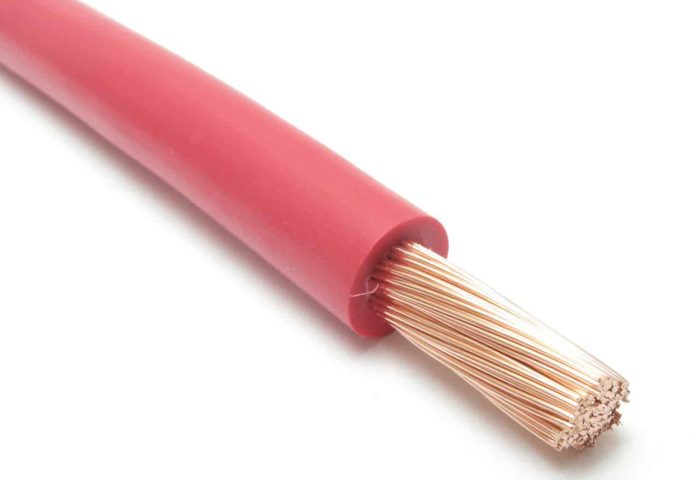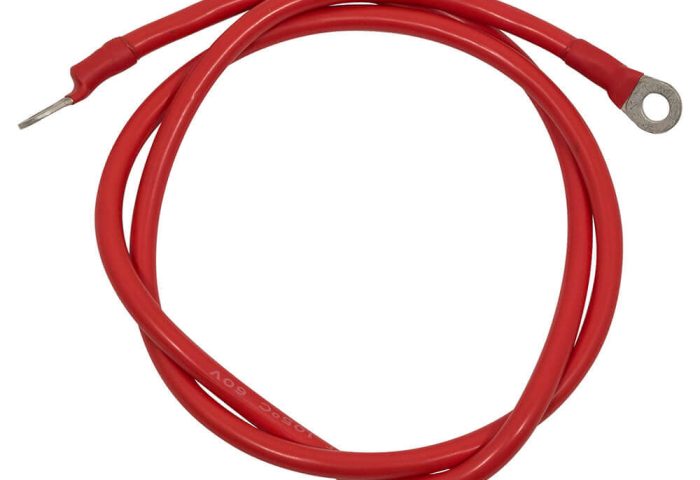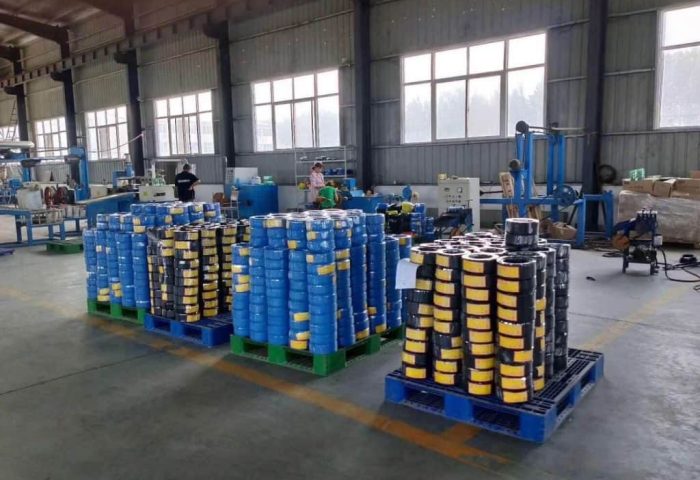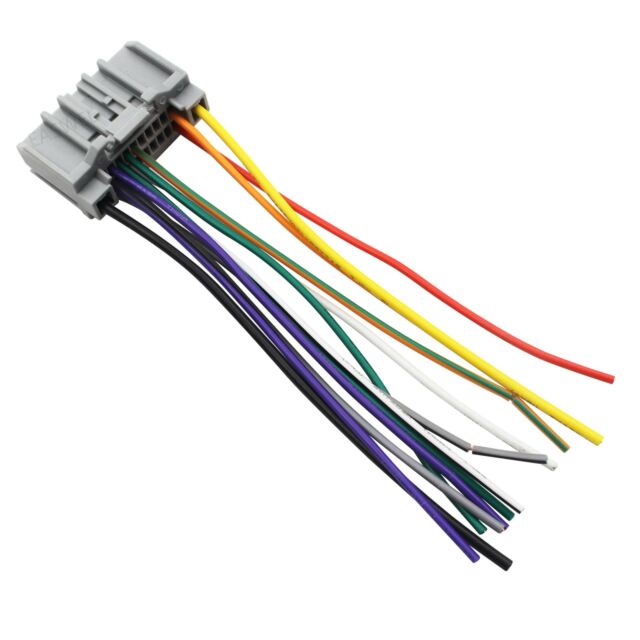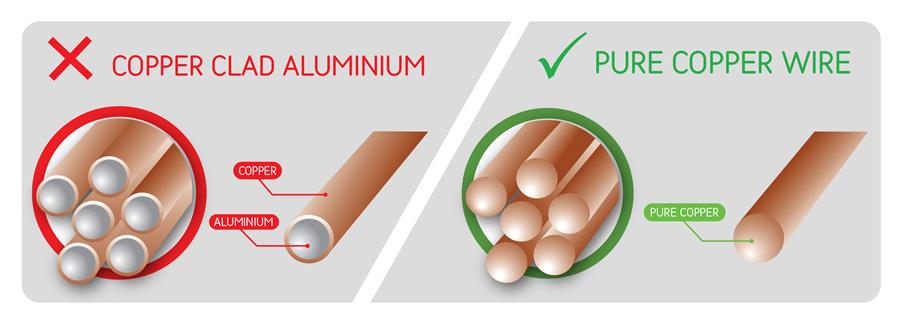- Leading Cable and Wire Manufacturer-ZW
- Power Wire
Power Wire
- According to IEC and GB Standard
- PVC Insulation
- Oxygen-free Copper
- Flexible Jacket
The power wire is consists of strands of copper conductors. The usual conductor diameter is 0.20 mm. As the cables are very flexible, they are used in a wide range of applications. Therefore many customers are willing to purchase
| Conductor Size | (0.25mm) | Conductor Diameter(in.) | Insulation Thickness(in.) | Total Diameter(in.) | Max Amp |
|---|---|---|---|---|---|
| 6 AWG | 253 | 0.20 | 0.06 | 0.32 | 115 |
| 4 AWG | 370 | 0.23 | 0.06 | 0.35 | 150 |
| 2 AWG | 634 | 0.30 | 0.06 | 0.42 | 205 |
| 1/0 | 1004 | 0.47 | 0.08 | 0.53 | 285 |
| 2/0 | 1255 | 0.43 | 0.08 | 0.59 | 325 |
| 4/0 | 2047 | 0.56 | 0.08 | 0.72 | 440 |
Conductor: Copper Class 5
Insulation Color: Red, Blue, Yellow, Black, etc
Voltage: 450/750V
A power wire is an electricity cable that consists of one or many electrical connections and a sheath. Electrical power is transmitted through the assembly. For installation, each application needs a specific wire size. The wire gauge determines the appropriate size for a particular activity.
The American wire gauge system is used to size wire. The most used wire sizes are 10, 12, and 14 — the higher the number, the smaller the wire size, and the less power it can transport. Electrical wire comes in a variety of shapes and sizes.
A wire can overheat and melt if it receives too much electricity. It isn’t easy to know which type is appropriate for your application. You need to save power. It’s critical to make the right decision. Failures might occur if the wrong wire is used. In this article, you will know more details about the power wire.
1. What Size Power Wire Do I need For My Amp?
It’s critical to have the best amp power wire connections when installing an aftermarket car audio system. The proper links and power wire guarantee that the strongest signal reaches its intended location. Also, ensure that a sufficient power supply wire is provided to the receiving components.
The power and ground wire that connects the vehicle’s battery to an aftermarket amplifier is one of the most crucial connectors in a car audio system. How much power may be transmitted to an amplifier is determined by the power wire gauge of the cable. An amplifier requires a power and ground wire that is large enough to satisfy its electrical current consumption to function correctly.
The strain gauge, which is inherent in all wires, is the reason why different cable segments have varied values. It gets worse as the line lengthens until the pressure decreases below a level sufficient. The gauge (thickness) of the power cable to utilize is determined by the amount of current your system will require at a certain point.
2. How to Connect Power Wire to Car Battery?
Car amplifiers do not come with power cords or cables. The amplifier will require power, ground, an input fuse, a remotely switch on wire, RCA cabling, and speaker wires, as well as an inline fuse, an inline fuse, a remote turn-on cable, RCA connectors, and speaker cables. The size amp you buy will be determined by the amount of space you have to work.
The trunk or luggage area of your automobile is a frequent spot to store an amplifier. However, if you’re driving a larger vehicle, space is restricted, and you’ll need to consider placing the amplifier beneath, behind, or between the seats. 6AWG copper battery cable manufactured with 6AWG power wire is more flexible, resilient, and stable, making it ideal for power applications.
3. What Color Is the Power Wire for A Car Radio?
Figure 1: Color code for stereos
To get to the stereo’s housing on stock stereos, you must remove the dashboard’s power wire area. Each electrical power cable function varies depending on the sort of car you have. When considering power wire colors, however, red-black power wires are used.
The red wire usually denotes “Power,” while the black wire denotes “Ground,” the yellow wire denotes “Remote,” and the striped, multicolored lines indicate speaker wires. Using the stereo wiring schematic, determine the function of each wire on the new stereo you intend to connect to your vehicle. Determine each power wire gauge’s position.
At the dash of the car, click the relevant power line wire. You will require the best amp power wire for your amplifiers. With over 1500 watts RMS you need 0 gauge power wire.
Wall outlets give 110-volt AC power to the amplifier, but amplifiers require a 12-volt dc power wire. You’ll need to have good amp power for the process to be successful. An 8 gauge power wire will give you enough power supply for your amplifier.
4. Cca vs. Copper Power Wire
Figure2: Cca vs Pure Copper Wire
The acronym for copper-clad aluminum (CCA) is copper-clad aluminum. To increase efficiency, copper-clad aluminum wire has a cast aluminum base that is coated in copper cover. So the CCA’s outer covering is copper, but the inside strands are all aluminum type that carry a lot of power.
Because of the mental characteristics of aluminum, it holds more heat than copper. CCA is much less costly and lighter than copper. If you’re on a budget or have tiny pieces of cable that don’t always require the highest level of connectivity, a cc-power is an excellent option for copper power wire.
The oxygen-free copper is referred to as OFC. The copper with nearly all of its oxygen removed to increase conductivity is known as oxygen-free copper. OFC Copper power wire gives the benefits of transmitting more power through a wire strand of no more than 20 feet with little resistance and heating.
Another advantage of OFC is that it takes very little heat than CCA. The last benefit of copper power wire has superior corrosion resistance over cc-power wire. Determine your final goals, investigate your wire, and select accordingly.
5. How to Run Power Wire?
Mount the amplifier according to the manufacturer’s instructions and make sure it’s secure. Set the handbrake and unhook the negative connection from your cell to avoid any electrical shortages or charges. Set the brake pedal and unhook the negative connection from your battery to avoid any electrical shorts or shocks.
Ensure there is no live wire power cable before begin to set up. Find an unoccupied grommet in the foundation or one with connections or lines flowing through it, that is big enough to fit the house power wire. As your wire goes through the slot, use a grommet to keep it from fraying and shorting. Install the fuse holder with a screw or cable tie.
Secure the fuse holder in place, so it doesn’t dangle or bounce around. You run a single heavy-gauge power line via your battery to a transmission block for supplying several amplifiers. Connect each amplifier to the league with a lighter-gauge cable.
This design minimizes the risk of signal problems while also maintaining your assembly looking neat. Connect the power wire with the positive terminal of the battery. Remove the nut from the battery terminal and place the loop of the power cable over the bolt that connects the battery connector to the battery pillar. Locate a ground bolt on your vehicle’s metal chassis as close as possible to the amplifier’s location.
6. How to Hook Up 2amps with 1 Power Wire?
Figure 3: 2 amps Hooked Up With 1 Power Wire
If you add very many amps and demand too much output, you may need to upgrade your dynamo or install a strengthening plate. The amount of open area, the results you want, the amplifier classes you use, and personal preference all factor into whether you should connect your several speakers with a single multi-channel amp or many amps. Because your power cable must manage the current draw from all of your amps simultaneously, it must be substantially larger in gauge than the requirements of your amps require.
For example, if your amps require only 8 gauge cable. The power supplied by 2 gauge electrical lines is insufficient. A power distribution block is the best technique to connect multiple amps to a single power connection.
It allows you to use just one wire for the majority of the journey. It contains the critical information that must travel over the barrier. If your amps don’t come with built-in fuses, a distribution block is fused as well.
It’s crucial to keep yourself safe. Accidents might occur if your wires and cables are not correctly installed. Choosing the suitable gauge wire for your installation is essential now that we know the projected current flow for the amplifiers and the length of power and ground wire required.
It’s also a good idea to avoid CCA (Copper Clad Aluminum) wire, which is far less conductive than natural copper and can result in substantial voltage dips. If you’re unsure which power wire to use, it’s always a good idea to choose a size up. Choosing a giant cable will not harm your system; however, you will spend a little more money.
It is, however, an investment in your equipment that will pay off well. If you choose a smaller cable, less current will flow, resulting in voltage dips that restrict the amplifier’s output potential while also posing major safety concerns.

